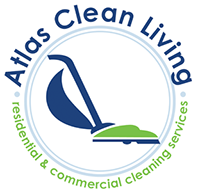If you suffer from allergies, keeping your home clean is one of the best ways to reduce symptoms. Dust, pet dander, mold, and pollen can accumulate in your living space, triggering sneezing, congestion, itchy eyes, and even asthma flare-ups. While regular cleaning helps, not all cleaning methods are allergy-friendly. Some products and techniques can actually make symptoms worse by stirring up allergens or introducing harsh chemicals into the air.
To create a healthier home environment, follow these hypoallergenic cleaning tips that help minimize allergens without compromising air quality.
- Use HEPA Filters for Cleaner Air
HEPA (High-Efficiency Particulate Air) filters are one of the most effective tools for allergy sufferers. These filters are designed to trap at least 99.97% of particles as small as 0.3 microns, including dust, pollen, pet dander, and mold spores.
- Vacuum Cleaners: Invest in a HEPA-filter vacuum to prevent allergens from becoming airborne while vacuuming.
- Air Purifiers: A HEPA air purifier in frequently used rooms can help reduce allergens.
- HVAC Systems: Replace HVAC filters regularly and use HEPA-rated options for better air quality.
- Dust Smartly with Microfiber Cloths
Traditional dusting with a feather duster or dry cloth often spreads allergens into the air rather than capturing them. Instead, use a microfiber cloth, which is designed to trap dust and allergens.
- Damp Dusting: Lightly dampen microfiber cloths with water or a hypoallergenic cleaning solution to prevent particles from becoming airborne.
- Ceiling Fans & Vents: Don’t forget to clean ceiling fan blades, air vents, and baseboards, where dust accumulates.
- Vacuum at Least Twice a Week
Carpets and rugs trap allergens like pet dander, pollen, and dust mites. To keep them under control:
- Vacuum twice a week using a HEPA-filter vacuum.
- Pay extra attention to high-traffic areas, under furniture, and pet-friendly zones.
- Consider removing carpets and replacing them with hard flooring (wood, tile, or vinyl) for easier maintenance.
- Wash Bedding and Linens in Hot Water
Dust mites are a common trigger for allergies and love to live in bedding, pillows, and blankets. Washing your linens properly can significantly reduce their presence.
- Wash sheets, pillowcases, and blankets weekly in hot water (at least 130°F).
- Use allergen-proof mattress and pillow covers to prevent dust mites from accumulating.
- Consider replacing pillows every 6 months and using hypoallergenic options.
- Declutter to Reduce Dust Traps
Excess clutter creates more surfaces for dust to settle on and can make cleaning more difficult. Keep your home tidy by:
- Minimizing decorative items, books, and knick-knacks in bedrooms.
- Storing items in closed cabinets or containers to prevent dust buildup.
- Regularly donating or discarding unused items to keep spaces clutter-free.
- Choose Hypoallergenic Cleaning Products
Many commercial cleaning products contain strong fragrances, ammonia, or harsh chemicals that can irritate allergies. Instead, look for:
- Fragrance-free, dye-free, and hypoallergenic cleaning solutions.
- Natural alternatives like white vinegar, baking soda, and hydrogen peroxide.
- Non-toxic, plant-based cleaners that are safe for allergy-sensitive individuals.
- Keep Windows Closed During High Pollen Seasons
Fresh air is great, but if you have seasonal allergies, open windows can bring in pollen, mold spores, and other outdoor allergens.
- Keep windows and doors closed during peak allergy seasons.
- Use air conditioning instead of fans, which can circulate allergens.
- Clean window sills, blinds, and curtains frequently to prevent dust and pollen buildup.
- Control Humidity to Prevent Mold & Dust Mites
High humidity levels create the perfect environment for mold and dust mites to thrive. Maintain a humidity level of 30-50% in your home by:
- Using a dehumidifier in damp areas, such as basements and bathrooms.
- Running an exhaust fan while showering to reduce moisture buildup.
- Fixing leaks and drying spills immediately to prevent mold growth.
- Deep Clean Upholstery, Curtains, and Mattresses
Soft fabrics collect allergens over time, so it’s important to clean them regularly.
- Vacuum sofas, chairs, and curtains weekly with an upholstery attachment.
- Steam clean upholstery and mattresses every few months to remove embedded dust mites.
- Wash or replace curtains with washable blinds for easier maintenance.
- Schedule a Professional Cleaning Service
Even with regular maintenance, allergens can accumulate in hard-to-reach areas. A professional cleaning service with Atlas Clean Living can provide a deeper clean, reducing allergens more effectively. If you struggle with allergies, booking a seasonal deep clean or monthly maintenance service can help maintain a healthier living environment.
Final Thoughts
For allergy sufferers, a clean home isn’t just about aesthetics—it’s about health and well-being. By following these hypoallergenic cleaning tips, you can significantly reduce allergens in your home, improve air quality, and enjoy a fresher, healthier living space.
Would you like help setting up a professional hypoallergenic cleaning service? Atlas Clean Living specializes in allergen-reducing cleaning techniques to keep your home safe and comfortable. Contact us today!


